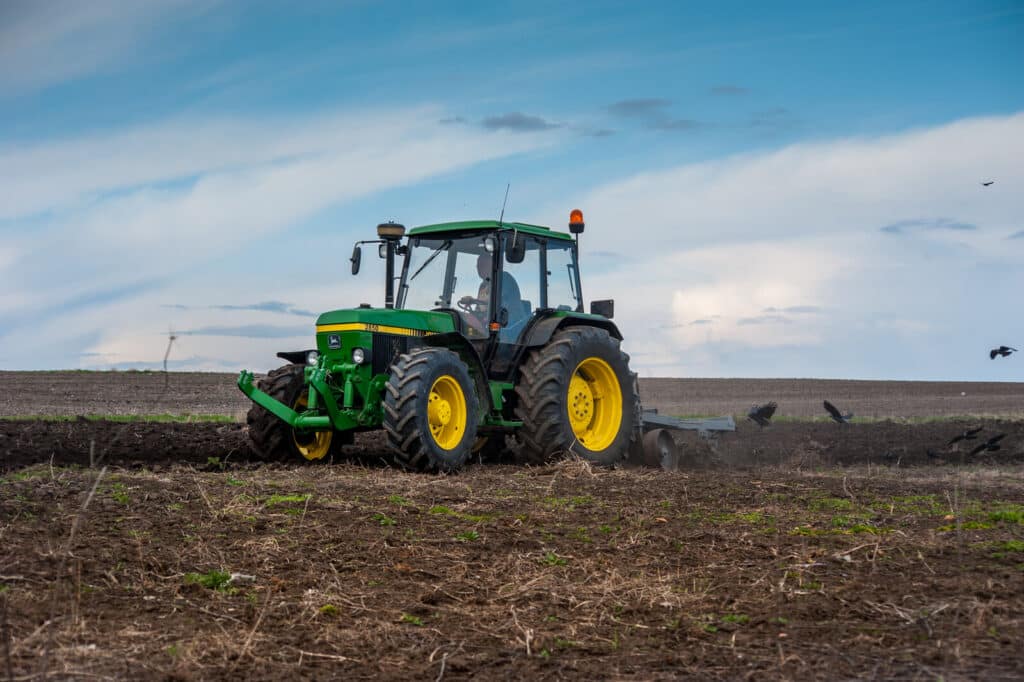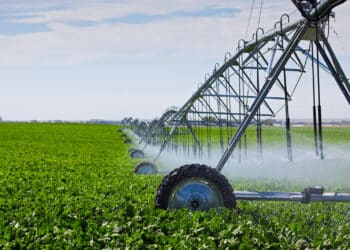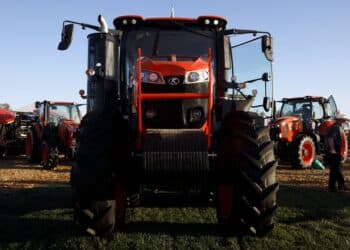John Deere’s stock dipped on the heels of the company’s latest earnings report as the outlook for the agricultural industry worsened for the second half of 2023.
Deere & Co., the parent of John Deere and its subsidiaries, saw its stock decline by 5.28% or $22.14 from market open to $397.02 at market close on Friday following the release of its earnings for the third quarter of fiscal 2023, which ended July 30.
Following Friday’s decline, Deere & Co. shares closed trading at $390.79, down $6.23 or 1.57% today.
The turmoil on the agriculture market matters because John Deere boasts nearly 2,200 dealerships in its network.
Deere’s stock fell as concerns grew regarding the agricultural industry’s performance and outlook heading into the fourth quarter as normal seasonality returns. Agricultural revenues are expected to be flat to down in Q4, Brent Norwood, director of investor relations, said during Deere’s earnings call Friday.
“The big driver is we are seeing a return to normal seasonality, which means we will institute normal factory shutdowns, particularly at Harvester Works; historically we’ve done factory shutdowns in the month of September and/or October,” Norwood said. “You’re going to see the impact of shutting that down.”
Due to supply chain-related delays, Deere did not have normal shutdowns in 2021 and 2022, Norwood said.

USDA projects decline
Declining ag yield is also contributing to concerns regarding the industry’s upcoming performance. Forecasted yield per harvested acre declined for United States-produced products such as corn, cotton and feed, with rice yield ticking up, according to a World Agricultural Supply and Demand Estimates report released Aug. 11 by the U.S. Department of Agriculture.
Despite the forecasted decline in crop yields, the pricing outlook for the farm industry and demand for farm equipment remain positive and North American ag industry conditions remain strong, Norwood said.
“Grain prices have definitely seen a large amount of volatility this year, but equipment demand has remained strong, particularly for large ag,” Norwood said. “While down year over year, crop prices are forecasted to be the third highest in over a decade, and in North America, farmers are projected to have another year of healthy net income.”
Deere projects fiscal 2023 industry sales of large ag equipment to be up 10% YoY in the U.S. and Canada, while small ag and turf industry sales are forecast to be down between 5% and 10%, according to the company.
Agriculture producer sentiment improved in July, landing at an index value of 123, up 2 basis points (bps) month over month and 20 points YoY, according to the Ag Economy Barometer published by Purdue University and the CME Group. Sentiment is down 30 bps from July 2019’s pre-pandemic levels as industry trends continue to return to 2019, Norwood said.
“Farm inputs have trended back down to pre-COVID levels, providing a benefit to next year’s farm margins,” he said. “As grain production remains subject to ever-volatile weather patterns and adverse geopolitical events, expect [food inventory] to remain tighter for a bit longer.”










